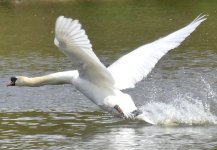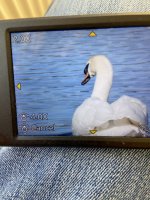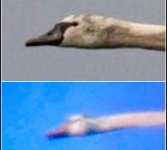2022 Review of the year.
The best year for total numbers of species – 107. Six months had new record highs of numbers of species (October finishing up with 72 species, the highest ever in 1 month.) and the total year average was 61.2 species per month, another new high. Many species were recorded in months that had not previously recorded them, the average species total for all months is now 75 species. (April is the best month with 83 species recorded over the years.)

There were nine new additions to the Patch List, the same as last year which was more than expected. The Patch/Garden list now stands at 131 species:
- Dunlin Most unexpected, as not on my predicted list. Heard clearly, called 9x
- Coot h Calling, a nocturnal flyover
- Osprey Watched from the living room window for a few minutes, slowly drifting West
- Red-legged Partridge 2 birds in distant field, only visible when there are no leaves on the trees
- Nightingale A bird seen preening in a hedge
- Green Sandpiper 3 birds heard and seen flying low West. Neighbour has had 1 in the garden!
- Whooper Swan ~6 birds calling, flew low West overhead
- Firecrest A male calling loudly right next to me
- Jack Snipe Present on 2 days in the river during the big freeze
As ever there are some birds on the up and others on the down. Those most obvious to me are listed here:
Winners
Blackcap seen in every month of the year for the first time. A minimum of 5 birds seen in December.
Greylag Goose seen in 9 months of the year. Has been increasingly seen in more months each year for the last 4. This year bred on the flood, outside of the patch boundary but viewable from the patch.
Little Grebe seen in 4 months, the best showing by far, seems to be increasing year on year.
Oystercatcher seen in 4 months, with the first late autumn record also, usually averages 2-3 months.
Bullfinch seen in 4 months, including birds seen on successive days feeding in the garden, the best showing in my 5 years here.
Reed Bunting seen in 4 months, including a reasonable passage during viz-mig and 1 feeding on the bird table.
Moorhen bred in the garden successfully for the first time, with broods of 2 and 1 fully fledged and still present as a group of 5.
Teal being seen for more months, arriving in September and staying through till April this year, seen in the garden fairly frequently.
Peregrine extending sightings to 8 months, helped by a young summering bird which spent 100 days perched on the church opposite. The second summer this has happened, involving 2 different 2CY males, hopefully breeding may take place in due course.
Losers
Cetti’s Warbler only heard in 2 months, though also seen for the first time, during the year. Possibly breed in the area and may have just chosen to breed out of earshot of the patch.
Siskin only seen in 5 months, though this is the average, after last years good showing, including singing birds in 7 months of the year. Presumably reflects the local Breckland population.
Lesser Redpoll only seen in 4 months of the year c.f. 6 last year. Mirrored by Siskin locally.
Great Black-backed Gull, only seen in 4 months, which is about the long-term average, but after a good year last year. May just reflect my lack of effort in checking Gulls later in the day. Not a common bird locally.
Whitethroat seen in just 1 month in autumn c.f. 3 months last year when held also territory.
Merlin not seen this year after sightings in 2 months of last year, which was exceptional.
Grey Wagtail whilst seen every month has actually bred every year prior to this, when the breeding attempt was abandoned due to unknown cause and sightings have been more sporadic. Still in the area and hopefully a nest box will be in place in time for next year.
Tawny Owl was a previous breeder but sightings of day-roosting birds have become scarce in the last 2 years and they are now almost never seen. Sometimes multiple birds still heard at night in suitable weather but the garden has been abandoned. I think this is due to lack of prey down to the Cats decimating the small mammal population. An Owl box is to be erected but until the Cats go I suspect it will be empty.
Kestrel has been seen far less frequently than before. Despite breeding across the road birds have been scarce since the autumn and are seldom seen hunting. I believe this is down to the presence of a number of Cats which have appeared this year and regularly hunt the scrub behind the garden. Previously I heard and occasionally saw Voles/Shrews/Mice but this has become much more infrequent. This year no Water Voles or Grass Snakes were seen which is unusual.
Jay sightings have become much thinner on the ground, though seen in nearly all months sometimes on just 1 occasion. Previously very regular I think this is down to an absence of Tawny Owls roosting, which the Jays used to search out assiduously.
Pheasant sightings continue to decline, seen in just 6 months and rarely in the garden anymore, once seen just escaping the clutches of a Cat. Prior to this displaying males were frequent. They clearly do not feel safe any longer.
Nuthatch is declining faster than ever, once seen in nearly every month, even nest prospecting, it has dropped to last year seeing 1 bird on two consecutive days to this year just 1 bird seen on one occasion and a different individual picked up seemingly uninjured, but dead by the front door. Not a window strike or Cat victim – mysterious.
Not much time, or suitable weather between now and years end so this is probably my last word for 2022. I'm away for half of January so will no doubt start Garden yearlisting in earnest after that.



























